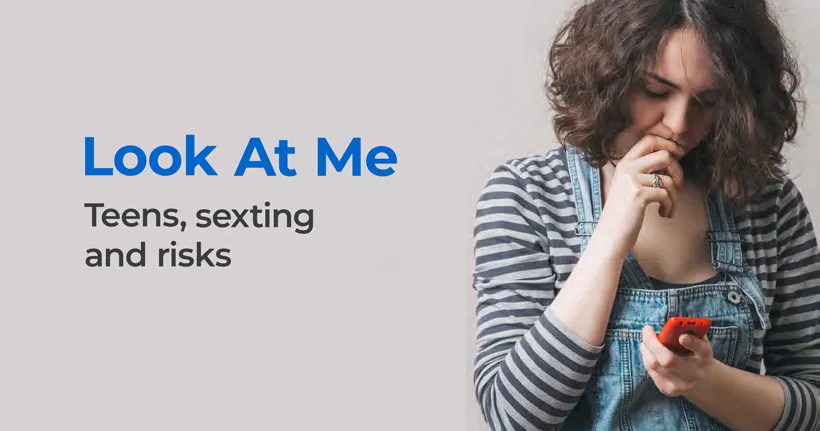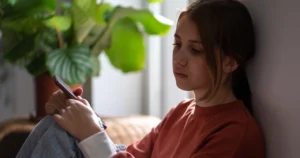Sexting facts & advice
Learn what sexting is, why children sext, and how you can help protect them using our guides and advice below.
 Close video
Close video
What’s inside the hub
 Close video
Close video
Learn about sexting
Understand the risks that children may face online to offer the right support to keep them safe.
 Close video
Close video
Protect children from sexting
Get advice to give children the right tools to help them make smarter choices about what they share.
 Close video
Close video
Dealing with sexting
Get advice on helping your child if they’ve sent or received a nude or sext and minimise it’s impact.



Getting the facts on sexting
The term ‘sexting’ is used to describe the sending and receiving of sexually explicit photos, messages and video clips, by text, email or posting them on social networking sites.
Young people may send images and messages to their friends, partners, or even strangers they meet online. Although there is a lot of talk among teens of sending nudes research shows there’s been little growth in the number of young people doing it.
Explore our advice hub to get the facts on why young people may get involved in sexting, what the law says about sexting and what you can do to help your child if they are negatively affected by it.
Recommended external resources
Featured sexting articles
 Research
Research
Preventing ‘self-generated’ child sexual abuse
This report explores effective methods to prevent the sharing of 'self-generated' child sexual abuse material among pre-teens.
 News & blogs
News & blogs
What is undress AI? Guidance for parents and carers
Artificial intelligence continues to increase in ability and technology. Undress AI is one example that could leave young people open to harm.
 Expert opinion
Expert opinion
How schools tackle sexual image-sharing among pupils: Insights from a teacher
Dr. Tamasine Preece shares her experience of sexual image-sharing among pupils in schools.
 Research
Research
Teen girls’ experiences of harm online
Our latest Digital Wellbeing Index report shows that teen girls experience significantly more negative outcomes online than other children.
 Research
Research
Internet Matters x Nominet research: Methods to prevent the spread of self-generated CSAM
In this blog we share findings from Round 2 of our research into the prevention of sexual image-sharing among 11-13-year-olds.
